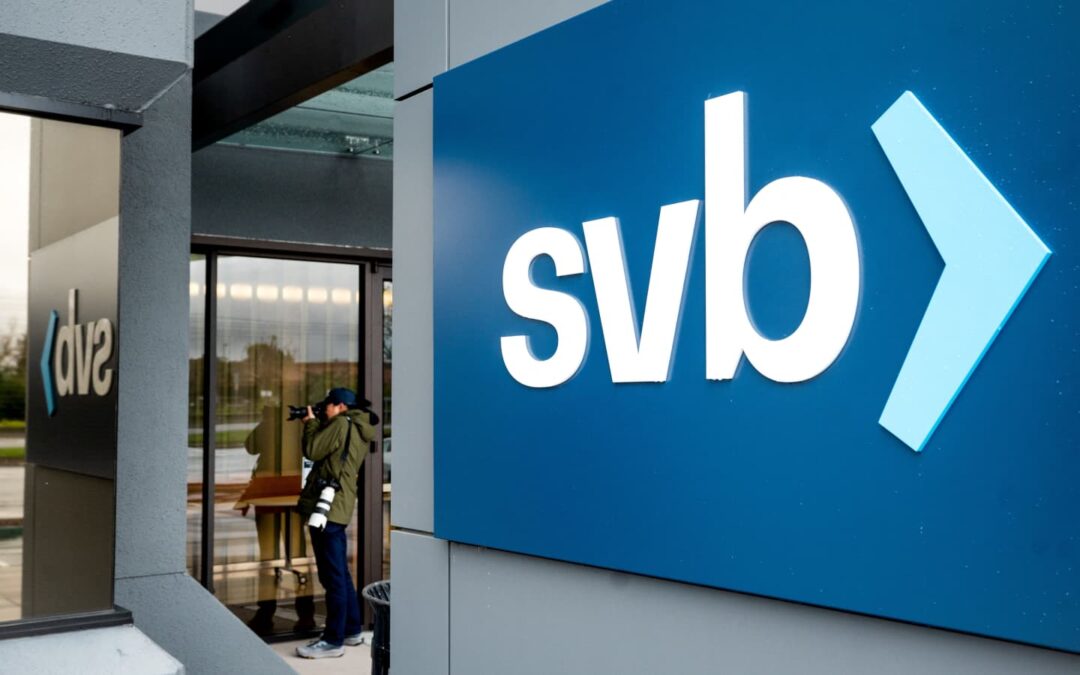
by Robyn Bolton | Apr 2, 2023 | Innovation, Tips, Tricks, & Tools
The Official Story
“Innovation” is not peanut butter.
You can’t smear it all over everything and expect deliciousness.
When discussing innovation, you must be specific so people know what you expect. This is why so many thought leaders, consultants, and practitioners preach the importance of defining different types of innovation.
- Clayton Christensen encourages focusing on WHY innovation is happening – improve performance, improve efficiency, or create markets – in his 2014 HBR article.
- The classic Core/Adjacent/Transformational model focuses on WHAT is changing – target customer, offering, financial model, and resources and processes.
- McKinsey’s 3 Horizons focus on WHEN the results are achieved – this year, 2-3 years, 3-6 years.
It’s easy to get overwhelmed by the options and worry about which approach is “best.” But, like all frameworks, they’re all a little bit right and a little bit wrong, and the best one is the one that will be used and get results in your organization.
The REAL story
Everything in the official story is true, but not the whole truth.
“Innovation” is not peanut butter.
You can’t smear it all over everything and expect deliciousness.
When doing innovation, you must remember your customer – the executives who make decisions, allocate resources, and can accelerate or decimate your efforts.
More importantly, you need to remember their Jobs to be Done (JTBD) – keep my job, feel safe and respected, and be perceived as competent/a rising star – because these jobs define the innovations that will get to market.
3 REAL types of innovation
SAFE – The delightful solution to decision-makers’ JTBD
Most closely aligned with Core innovation, improving performance or efficiency, and Horizon 1 because the focus is on improving what exists in a way that will generate revenue this year or next. Decision-makers feel confident because they’ve “been there and done that” (heck, doing “that” is probably what got them promoted in the first place). In fact, they’re more likely to get in trouble for NOT investing in these types of innovations than they are for investing in them.
STRETCH – The Good Enough solution
Most like Adjacent innovation because they allow decision-makers to keep one foot in the known while “stretching” their other foot into a new (to them) area. This type of innovation makes decision-makers nervous because they don’t have all the answers, but they feel like they at least know what questions to ask. Progress will require more data, and decisions will take longer than most intrapreneurs want. But eventually, enough time and resources (and ego/reputation) will be invested that, unless the team recommends killing it, the project will launch.
SPLATTER – The Terrible solution
No matter what you call them – transformational, radical, breakthrough, disruptive, or moonshots – these innovations make everyone’s eyes light up before reality kicks in and crushes our dreams. These innovations “define the next chapter of our business” and “disrupt ourselves before we’re disrupted.” These innovations also require decision-makers to let go of everything they know and wander entirely into the unknown. To invest resources in the hope of seeing the return (and reward) come back to their successor (or successor’s successor). To defend their decisions, their team, and themselves when things don’t go exactly as planned.
How to find the REAL type that will get real results.
- “You said you want X. Would you describe that for me?” (you may need to give examples). When I worked at Clayton Christensen’s firm, executives would always call and ask for our help to create a disruptive innovation. When I would explain what they were actually asking for (something with “good enough” performance and a low selling price that appeals to non-consumers), they would back away from the table, wave their hands, and say, “Oh, not that. We don’t want that.”
- “How much are you willing to risk?” If they’re willing to go to their boss to ask for resources, they’re willing to Stretch. If they’re willing to get fired, they’re willing to Splatter. If everything needs to stay within their signing authority, it’s all about staying Safe.
- “What would you need to see to risk more?” As an innovator, you’ll always want more freedom to push boundaries and feel confident that you can convince others to see things your way. But before you pitch Stretch to a boss that wants Safe, or Splatter to a boss barely willing to Stretch, learn what they need to change their minds. Maybe it will be worth your effort, maybe it won’t. Better to know sooner rather than later.

by Robyn Bolton | Mar 22, 2023 | Innovation
How do people react when you say “innovation?”
- Lean forward, eyes glittering, eager to hear more
- Stare blankly and nod slowly
- Roll their eyes and sigh
- Wave their hands dismissively and tell you to focus on other, more urgent priorities.
If you answered C, you’re in good company.
Innovation is a buzzword. Quick searches of Amazon and Google Scholar result in 100,000+ books and 200,000+ articles on the topic, while a scan of the SEC’s database yields 8,000 K-1 filings with the word “innovation” in 2020 alone.
“Innovation” is meaningless, like all buzzwords. There’s a reason that practitioners and consultants insist on establishing a common definition before starting innovation work. I’ve been in meetings with ten people, asked each person to define “innovation,” and heard 12 different answers.
But all this pales in comparison to the emotional response it elicits. Some people get incredibly excited, bouncing out of their seats, ready to bring their latest idea to life (whether it should be brought to life is a different story.). Some nod solemnly as if confronted by a necessary evil, accepting a fate beyond their control. Most roll their eyes because they’ve been through this before and, like all management “flavors of the month,” this too shall pass.
“Innovation” is killing Innovation
The emotions and opinions we tie to “innovation” overwhelm the dictionary definition, making it difficult to believe that the process and, more importantly, the result will be different this time.
We need a different word.
One that has the same meaning and none of the baggage.
This may feel impossible, but if “literally” can mean “figuratively” (do NOT get me started on this 2013 decision) and the Oxford English Dictionary can add 700 new words in 2022, surely we can figure this out.
10 alternatives to “Innovation”
The following options are sourced primarily from conversations with other experts and practitioners.
- Invention
- Ideation
- Incubation
- Improvement
- Creation
- Design
- Growth
- Transformation
- Business R&D*
Yes, #10 is intentionally missing because…
What do you think?
Finding a new word (or maybe changing how “innovation” is perceived, understood, and pursued) is a group effort. One person alone can’t do it, and a few people on a call complaining about the state of things certainly won’t (we’ve tried).
What do you think?
Do we need a different word for “innovation,” or should we keep it and deal with the baggage?
If we need a different word, what could it be? What do YOU use?
If we keep it, how do you combat the misunderstanding, eye rolls, and emotional baggage?
Let us know in the comments.
* This option came directly from a conversation with a client last week, and I kinda love it.
We discussed the challenge of getting engineers to stay in a discovery mindset rather than jumping immediately to solutions. Even though they work in R&D (the function), he observed that 99.9% of their work (and, honestly, their careers) is spent on the D in R&D (development).
That’s when it clicked.
Research begins with investigation and inquiry to understand a broad problem and then uses the resulting insights to solve a specific problem. It is a learning process, just like the early stages of Innovation. And, just like in the early days of Innovation, you can’t predict the result or routinize the work.
Development focuses on bringing the “new or modified product or process to production,” Just like the later phases of Innovation when prototyping and experimentation are required, and risk is driven out of the proposition.
Traditional R&D focuses on technical and scientific exploration and solutioning,
Innovation focuses on market, consumer/customer, and business model exploration and solutioning.
It is R&D for the business.
Business R&D.

by Robyn Bolton | Mar 17, 2023 | Podcasts

by Robyn Bolton | Mar 16, 2023 | Speaking

by Robyn Bolton | Mar 14, 2023 | Innovation, Leadership
Last week, as news of Silicon Valley Bank’s losses and eventual collapse, took over the news cycle, attention understandably turned to the devastating impact on the startup ecosystem.
Prospects brightened a bit on Monday with news that the federal government would make all depositors whole. Startups, VCs, and others in the ecosystem would be able to continue operations and make payroll, and SVB’s collapse would be just another cautionary tale.
But the impact of SVB’s collapse isn’t confined to the startup ecosystem or the banking industry.
Its impact (should have) struck fear and excitement into the hearts of every executive tasked with growing their business.
Your Portfolio’s Risk Profile Just Changed
The early 2000s were the heyday of innovation teams and skunkworks, but as these internal efforts struggled to produce significant results, companies started looking beyond their walls for innovation. Thus began the era of Corporate Venture Capital (CVC).
Innovation, companies realized, didn’t need to be incubated. It could be purchased.
Often at a lower price than the cost of an in-house team.
And it felt less risky. After all, other companies were doing it and it was a hot topic in the business press. Plus, making investments felt much more familiar and comfortable than running small-scale experiments and questioning the status quo.
Between 2010 and 2020, the number of corporate investors increased more than 6x to over 4,000, investment ballooned to nearly $170B in 2021 (up 142% from 2020), and 1,317 CVC-backed deals were closed in Q1 of 2020.
But, with SVB’s collapse, the perceived risk of startup investing suddenly changed.
Now startups feel riskier. Venture Capital firms are pulling back, and traditional banks are prohibited from stepping forward to provide the venture debt many startups rely on. While some see this as an opportunity for CVC to step up, that optimism ignores the fact that companies are, by nature and necessity, risk averse and more likely to follow the herd than lead it.
Why This is Bad News
As CVC, Open Innovation, and joint ventures became the preferred path to innovation and growth, internal innovation shifted to events – hackathons, shark tanks, and Silicon Valley field trips.
Employees were given the “freedom” to innovate within a set time and maybe even some training on tools like Design Thinking and Lean Startup. But behind closed doors, executives spoke of these events as employee retention efforts, not serious efforts to grow the business or advance critical strategies.
Employees eventually saw these events for what they were – innovation theater, activities designed to appease them and create feel-good stories for investors. In response, employees either left for places where innovation (or at least the curiosity and questions required) was welcomed, or they stayed, wiser and more cynical about management’s true intentions.
Then came the pandemic and a recession. Companies retreated further into themselves, focused more on core operations, and cut anything that wouldn’t generate financial results in 12 months or less.
Innovation muscles atrophied.
Just at the moment they need to be flexed most.
Why This is Good News
As the risk of investment in external innovation increases, companies will start looking for other ways to innovate and grow. Ways that feel less risky and give them more control.
They’ll rediscover Internal Innovation.
This is the silver lining of the dark SVB cloud – renewed investment in innovation, not as an event or activity to appease employees, but as a strategic tool critical to delivering strategic priorities and accelerating growth.
And, because this is our 2nd time around, we know it’s not about internal innovation teams OR external partners/investments. It’s about internal innovation teams AND external partners/investments.
Both are needed, and both can be successful if they:
- Are critical enablers of strategic priorities
- Pursue realistic goals (stretch, don’t splatter!)
- Receive the people and resources required to deliver against those goals
- Are empowered to choose progress over process
- Are supported by senior leaders with words AND actions
What To Do Now
When it comes to corporate innovation teams, many companies are starting from nothing. Some companies have files and playbooks they can dust off. A few have 1 or 2 people already working.
Whatever your starting point is, start now.
Just do me one favor. When you start pulling the team together, remember LL Cool J, “Don’t call it a comeback, I been here for years.”




